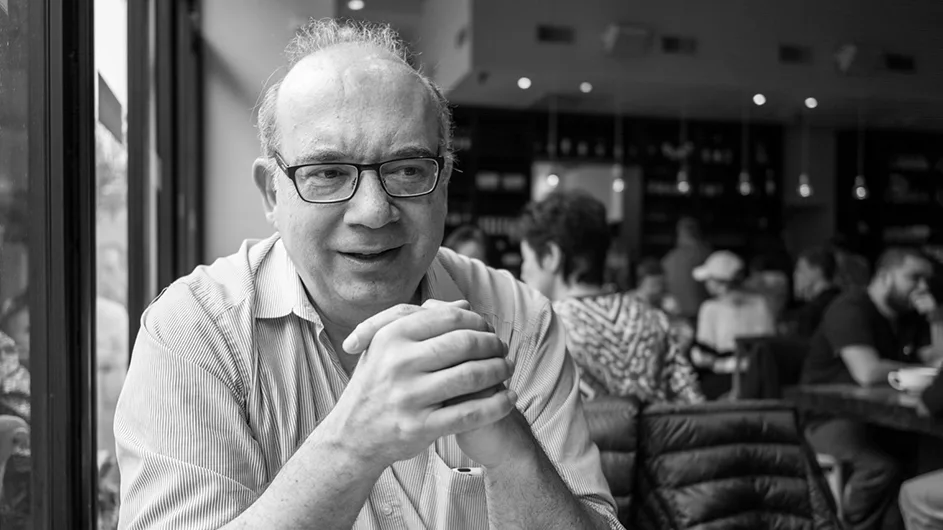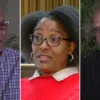
A few years ago, Claudio Lomnitz, the Campbell Family Professor of Anthropology, wrote: “I’ve always been a bit of a dilettante, even in my academic work, playing on fringes that I can never truly master.” This seems hard to believe, coming from a man who has mastered many things—both in and beyond academia—over the course of a distinguished career.
As the new chair of Anthropology, Lomnitz will helm the department—founded in 1902, it is the oldest anthropology department in the country—for the next three years. Columbia News caught up with him recently, to discuss his plans for the department, along with his own work, both scholarly and otherwise.
What is the single unifying thread that runs through your broad body of research?
All of my work explores the relationship between culture and politics. Within that wide field, I’ve nourished a special interest in the anthropology of national societies. My doctoral thesis proposed a conceptual and methodological framework for studying culture in internally differentiated, but economically integrated regions, including national spaces as a sub-type of those sorts of regions.
My two books (Deep Mexico, Silent Mexico and Modernidad Indiana) were collections of essays probing and extending those methods and ideas. After that research effort concluded, my work deepened historically, though with the same preoccupation with regional space, politics, and culture, and with the historical anthropology of national societies. The first major result of this heightened historical commitment was my book Death and the Idea of Mexico (2005), which is a political and cultural history of the management of death in Mexico, from the 16th to the 21st centuries. My second anthropological history—The Return of Comrade Ricardo Flores Magón (2015)—focused on the role of transnational networks in national political processes, and is a study of the first radical, grass-roots movement on the U.S.-Mexican borderlands. It casts the Mexican Revolution as a process that was ideologically dependent on transnational circuitry.
More recently, I turned my interest on the relationship between uprootedness and the national form to my own story, and wrote a book about my grandparents, Nuestra América: My Family in the Vertigo of Translation (2021). That book explores Jewish participation in Latin American, 20th-century cultural history, against the ingrained idea of Ibero-America being made up of three essentialized roots (Indigenous, Spanish, and African). I treated my own family in ways parallel to what I had done on the anarchist/socialist transnational networks that shaped the ideology of the so-called “Mexican” Revolution.
What are you working on now?
These past few years, I’ve turned my attention to the urgent matter of providing an anthropological perspective on the violence that currently is racking Mexico. This practically oriented turn has so far produced two books—El Tejido Social Rasgado (2021) and Para Una Teología Política del Crimen Organizado (2023), the first of which is being translated into English with Duke University Press.
Perhaps more importantly, though, this turn toward the urgent has impacted my teaching. Last year I created the Mexico’s Disappeared Practicum, to be taught every fall semester, working with students to produce social analyses of the context in which 112,000 people have been forcibly disappeared. This year we’re also launching a Disappearance Lab in the Anthropology Department, to study the phenomenon comparatively.
What are you teaching this semester?
I’m teaching the Mexico’s Disappeared Practicum, a course that is open to advanced undergraduate and graduate students, and Questions in Anthropological Theory I, which is the Anthropology Department’s pro-seminar for its first-year doctoral students.
As a new chair, what are your plans for the Anthropology Department?
Your question is a bit like asking a beauty contestant what her best hopes are (the answer: “world peace!”).
The work of a department chair is always focused on three things—the curriculum, new opportunities for faculty growth and diversification, and nourishing intense intellectual discussion among students and faculty (and, of course, world peace!). My aims are not exceptional in this regard.
As for specifics: This year our faculty will be using its collective time to appraise and reform our curricula—the undergraduate program, our two masters’ programs, and our PhD. In years two and three of my tenure as chair, we will also be assessing what areas of faculty growth to pursue. Starting this fall, we are taking advantage of our newly refurbished seminar room (Scheps Library, 4th floor, Schermerhorn Extension) to intensify the frequency of our departmental seminar (the Boas Seminar); and we will be launching the Disappearance Lab in December, with financial support from the university’s new Center for Political Economy, the Institute for Latin American Studies, and the Social Science Dean’s office.
What was your path to a career as a professor and a writer of both academic and non-academic texts and articles?
My career to professordom is boring to tell (though not to have pursued), because my parents were professors. I don’t mean to say that my parents foisted this career on me. They didn’t. Two of my three siblings are artists, the third was a physicist. Still, there is nothing heroic or serendipitous about my choice of career, and the teachable moments that it can offer from my experience are mostly too specific to share here. Except maybe for one thing: Doing the same thing as your parents helps you understand that being original is not all that it’s cracked up to be.
Becoming a writer of non-academic texts is a different kettle of fish. I owe that propensity to the liberty that growing up in Mexico City afforded me. Cultural and intellectual life in Latin American capitals—at least in my generation; I don’t know whether or not this is still true—required cultivating horizontal ties. There weren’t enough specialists for scholars to fence in their disciplinary discussions, so ideas tended to bleed into other fora—newspapers most often, but also various transdisciplinary ventures. I began to publish occasionally in newspapers relatively early, writing the sort of haughty book reviews that you do when you have never written a book. I stopped once I realized that writing any book is a kind of small miracle, no matter how it turns out.
Later, when I was hired as a history professor at the University of Chicago, I participated in a public discussion in Mexico City, which led various papers to offer me a regular column. I refused for some years, because I took too long to write each column, and it was making my research impossible. But eventually, I learned to write columns without losing track of my research. So I did that for about 15 years. Now I write only a monthly column in the Mexico City magazine Nexos.
As for my playwriting, that is a different story. My brother, Alberto, is a theater director and actor in Mexico City. One day I was telling him about my research, and he said: “You know, there’s a play in that.” And then he offered, “Why don’t we write it together?” So we did and, surprisingly, the play won Mexico’s National Drama Award in 2010. I loved the experience of playwriting and the exhilaration of seeing the work set to stage. I found dramatic writing to be different from ethnographic or historical writing. There’s no description in it, for starters. Only action. It’s all timing, like in music. Some years later, Alberto and I wrote a second play, with musician Leonardo Soqui—a musical, La Gran Familia, based on my research on a Federal Police raid on an orphanage in Michoacán state. It was set to stage by Mexico’s National Theater Company in 2018.
Finally, my book, Nuestra América, is not an academic work, and it was published by a literary publishing house (Other Press). I don’t know how to explain how that happened, but it did, and I loved it.
What is special about teaching at Columbia and in New York?
Half of American literature concerns what is special about New York, so I won’t get into that. But this city is special, no question about it. And so is Columbia. I’m fond of studying and teaching in a place that has the sculpture of Alma Mater. I also like stone lions. And the whole Greek thing that we’ve got going, with all of those columns, and Virgil and Demosthenes staring down at us from outside Butler Library is practically an invitation for a toga party.
Beyond those embellishments, I admire this about Columbia’s Anthropology Department: It was the founding department for the field of anthropology in this country, with towering figures—starting with Franz Boas, and his many great students, Ruth Benedict, Zora Neale Hurston, Margaret Mead, Alfred Kroeber, Edward Sapir, and others. But all of this past greatness has not become an albatross around the faculty’s neck. What I admire most about Columbia is that each generation has been willing to invent itself.


